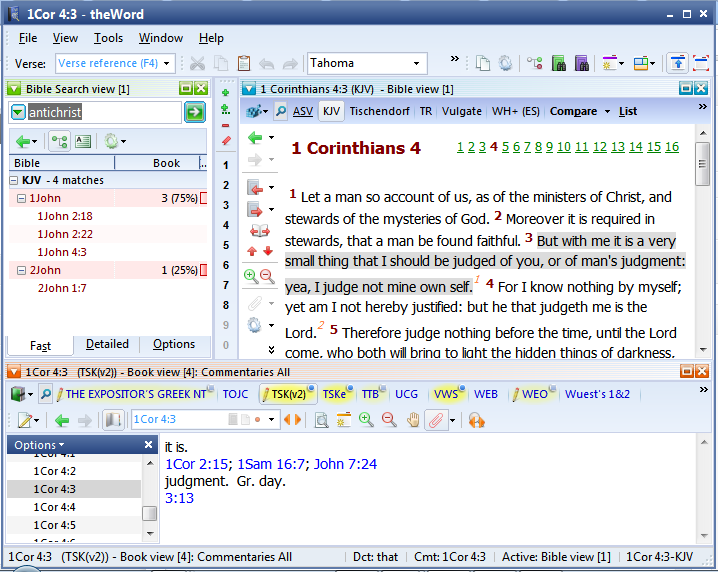Class Description: This post will go through how to make a Module set to see all your installed commentaries.
Prerequisite: Read and study How to Make a Model Sets.
Resource: Where do I download free Commentary Modules?
 .
.
Please help us keep this website up. We work hard to be a blessing to you. Donate to us. Even a $5 or $10 donation is greatly appreciated. All donations will go to pay hosting and domain fees.
You can use your PayPal account if you have one, or you can donate using any normal debit or credit card, pay through PayPal and chose just Debit or Credit Card.
In above link, click the “Bible Commentaries” in the sidebar to select only on specific books of the Bible.
- Bible Outline-Synopsis Commentaries.
- Cross Reference Commentaries.
- Devotional Commentaries.
- Exegetical Commentaries.
- Technical Commentaries.
One of the advantages of TheWord is the ability to make subsets of all your modules. In this class, we will make a Commentary Module set. What’s the purpose and advantage of this is in using and searching your modules, you can reduce what TW has to go through (filtering results and cutting down on search times) by just including commentaries.
I would think that the more commentaries that are out there, the more the serious Bible student would want most all of them, and then arrange and use them wisely.
At this point you might need to review or read and study for the first time, the basic Model Sets class How to Make a Model Sets.
In theWord, open Define Module Sets Icon, then click on Make Module Sets,
and do the following…
1.) Clear Tree
2.) Templates…
3.) Group by Type.
This will give you a module set with ALL your modules but by type.
4.) Click on Dictionaries, Books, and Maps in the tree in the center window, and click “Delete” (button on the right-hand column).
You should have only “Commentaries” folder remaining, with a bunch of commentaries under that. Select the first commentary in the list, hold down shift, and click on the slider bar on the right, until you see the last commentary, click on that, and then drag it above to get it out of the commentary folder.
5.) Delete the empty Commentary folder.
6.) Selective delete what Commentaries you don’t want. Here, do the steps, and make different types of commentaries you might want, all, technical, devotional, cross-reference, etc.
7.) Save your module set. TW will not remember this set of modules without saving it, so click on the checkbox “Save this Set” and enter the name below it (last entries in the right-hand column).
Once you are out of the Define Module Set dialog box, you click on the Green books icon again to select again whatever module sets you have made.
More Articles from this Category
- Module Sets: Specialized Categories
- Module Set: theWord Dictionaries
- Module Set: Parables & Types
- Module Set: Commentaries
- How to select a specific Module Set
- How to Make Module Sets
Module Set: Commentaries


Comments are closed.